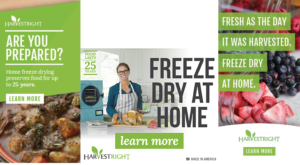
Off-grid living is all about self-sufficiency, sustainability, and reducing reliance on external resources. One essential skill that off-grid enthusiasts need to master is food preservation. When you’re living off the grid, you won’t have the convenience of a nearby grocery store, so learning how to preserve your food is crucial. In this comprehensive guide, we’ll explore various food preservation methods and techniques that are essential for off-grid living.
The Importance of Food Preservation in Off-Grid Living
Living off the grid often means being in a remote location far from urban centers. This isolation can make it challenging to access fresh food regularly. That’s where food preservation comes in. By preserving your food, you can extend its shelf life and reduce waste. Plus, it allows you to enjoy seasonal produce throughout the year, even when your garden isn’t in full bloom.
Methods of Food Preservation
1. Canning (Pressure and Water Bath)
Canning is a popular food preservation method that involves sealing food in jars or cans. It’s particularly effective for preserving fruits, vegetables, and even meats. Pressure canning is used for low-acid foods, while water bath canning is suitable for high-acid foods. Both methods involve heat processing to kill bacteria and other microorganisms.
2. Dehydrating
Dehydrating is the process of removing moisture from food items, such as fruits, vegetables, and herbs. This method is ideal for creating lightweight, shelf-stable snacks for off-grid living. You can use a food dehydrator or simply sun-dry your produce.
3. Fermentation
Fermentation is not only a preservation method but also a way to enhance the flavor and nutritional value of food. Foods like sauerkraut, kimchi, and yogurt are fermented to extend their shelf life while providing gut-friendly probiotics.
4. Freezing
While freezing requires a power source, it can still be part of off-grid living with alternative energy solutions like solar or wind power. Freezing is an excellent way to preserve meats, fruits, and vegetables while retaining their flavor and texture.
5. Root Cellaring
Root cellars are a traditional means of preserving root vegetables like potatoes, carrots, and onions. These underground storage spaces provide a cool, dark, and humid environment that keeps produce fresh for an extended period.
6. Freeze Drying
Freeze drying is another effective method for preserving food, particularly fruits, and vegetables. It involves freezing the food and then removing moisture through a process called sublimation. The result is lightweight, shelf-stable food that retains its original flavor and nutritional value.
Tools and Equipment for Food Preservation
To master food preservation for off-grid living, you’ll need some essential tools and equipment:
- Pressure canner or water bath canner
- Mason jars or canning jars with lids
- Food dehydrator or sun-drying racks
- Fermentation crocks or jars
- Freezer with a reliable power source
- Root cellar or cool, dark storage space
- Freeze dryer for freeze drying
Safety First: Food Preservation Guidelines
Safety is paramount when it comes to food preservation. Follow these guidelines to ensure your preserved foods are safe to eat:
- Use proper canning techniques and recipes.
- Maintain proper temperatures during the preservation process.
- Label and date all preserved items.
- Regularly inspect preserved foods for signs of spoilage or contamination.
Conclusion
Mastering food preservation is an indispensable skill for anyone embracing off-grid living. It provides food security, reduces waste, and allows you to savor the flavors of each season. With the right knowledge and equipment, you can enjoy the benefits of off-grid living while ensuring a steady supply of delicious, preserved foods.
Remember, practice makes perfect. Start small, experiment with different preservation methods, and gradually build your skills. Before you know it, you’ll be confidently preserving your harvest and enjoying the fruits of your labor throughout the year in your off-grid paradise.
